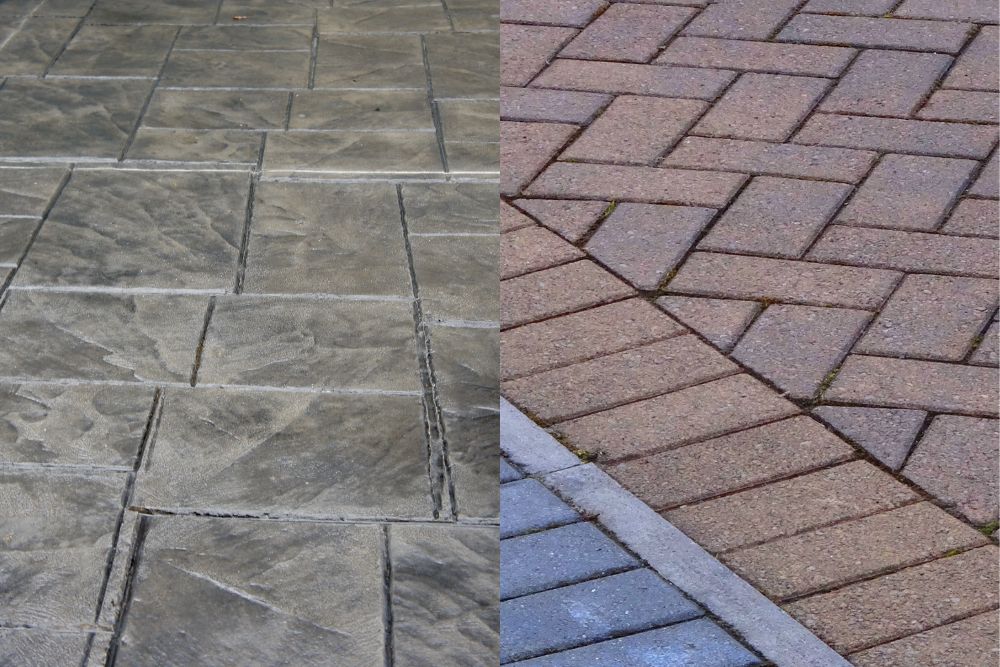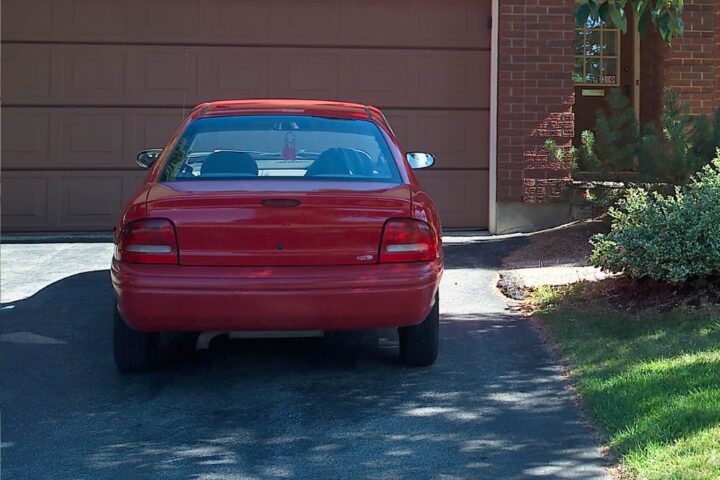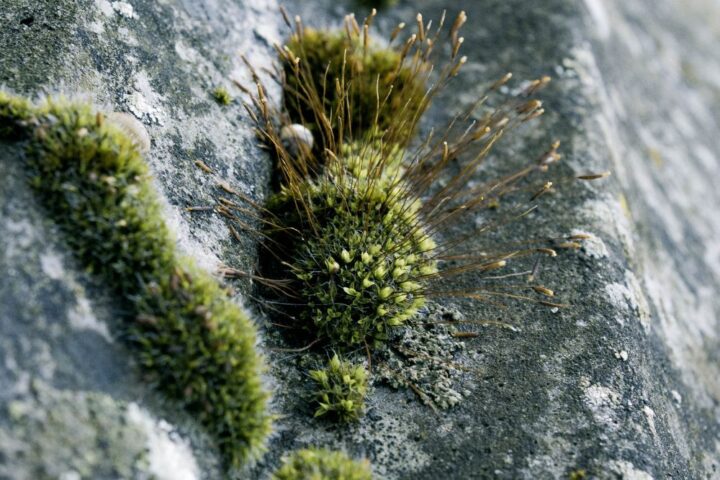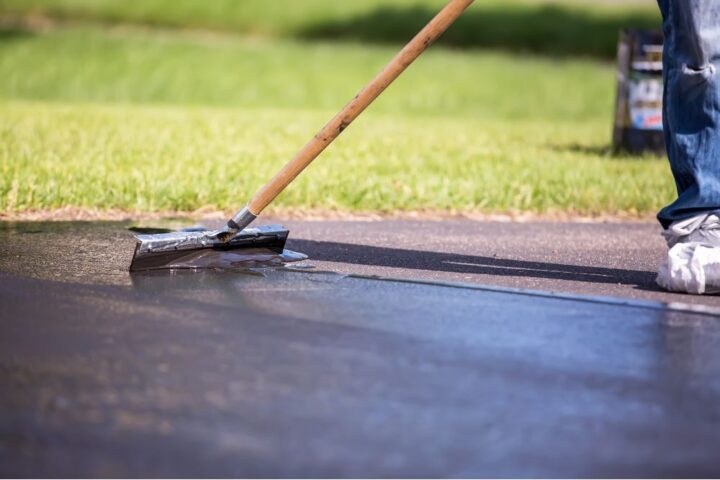When it comes to choosing between stencil concrete and pavers for a driveway, cost is often a deciding factor for homeowners. While both options have their advantages and drawbacks, determining which is cheaper requires a closer look at various factors.
Factors such as initial installation costs, long-term maintenance expenses, and the overall durability of each option can significantly impact the total cost of a driveway.
In this discussion, we will explore these factors and delve into the key considerations that can help homeowners make an informed decision about whether stencil concrete or pavers are the more cost-effective choice for their driveway.
Cost of Stencil Concrete Vs Pavers For Driveways
The cost of stencil concrete compared to pavers is a crucial consideration when deciding on the most affordable option for your concrete driveway. Concrete pavers tend to be more expensive than stamped and coloured concrete, with costs running as high as $20 per square metre. On the other hand, basic stamped concrete costs between $8 and $12 per square metre, while more complex projects can be as much as $18 per square metre.
When it comes to long-term costs for repair and maintenance, concrete pavers often have the advantage. They are less costly to repair or replace over time compared to stamped concrete.
Both stamped concrete and concrete pavers require similar preparation of a well-compacted subgrade, but placement times for concrete pavers tend to be longer due to the labour involved in placing each unit individually. However, concrete pavers offer a wide array of colours, stone-like shapes, and sizes, allowing for mix and match patterns and borders.
On the other hand, stamped concrete can recreate the look of natural stone or brick, with the ability to create random stone and wood patterns as well.
Factors Impacting Driveway Cost
Factors impacting driveway cost include the installation process, decorative options, and maintenance requirements for both stamped concrete and concrete pavers. The cost of concrete pavers can be higher, running as high as $20 per square metre, while basic stamped concrete can cost between $8 and $12 per square metre, with more complex projects reaching $18 per square metre.
Long-term costs for repair and maintenance need to be considered, with concrete pavers often being less costly to repair or replace over time compared to stamped concrete. Ease of installation varies; while concrete pavers require longer placement times due to individual unit placement, they can be opened to traffic immediately after installation, unlike poured-in-place concrete, which needs time to cure. Decorative options differ, with concrete pavers offering a wide array of colours, shapes, and sizes for mix and match patterns and borders, while stamped concrete can replicate the look of natural stone or brick with added textures and patterns.
Maintenance needs, including routine cleaning, joint maintenance, and the application of sealants, vary for both stamped concrete and concrete pavers, impacting long-term costs and appearance preservation.
| Factors | Stamped Concrete | Concrete Pavers |
|---|---|---|
| Cost per square metre | $8 – $12 | Up to $20 |
| Repair and maintenance costs | Higher | Lower |
| Installation time | Quick | Longer |
| Decorative options | Replicates natural stone or brick | Wide array of colours, shapes, and sizes |
| Maintenance needs | Routine cleaning, joint maintenance, and sealants | Routine cleaning, joint maintenance, and sealants |
Long-term Cost Considerations
When considering the long-term cost implications, it is important to evaluate the potential need for regular maintenance and associated expenses for both concrete pavers and stamped concrete. Concrete pavers are often a more cost-effective choice over time due to their lower long-term costs for repair and maintenance compared to stamped concrete. The durability of concrete pavers can lead to reduced long-term repair and replacement expenses, making them a more economical option in the long run.
One of the key factors to consider is the durability and resistance to weathering of the paving materials. Concrete pavers are stronger and less prone to cracking and settling compared to stamped concrete. This means that the long-term cost implications of repairs and replacements are generally lower for concrete pavers.
On the other hand, stamped concrete may require more frequent maintenance and repairs over time, which can increase its long-term cost.
Another aspect to consider is the cost of concrete itself. Stamped concrete is poured concrete that is imprinted with patterns to resemble natural stone or other materials. While the initial cost of stamped concrete may be lower than that of concrete pavers or natural stone, the long-term maintenance and repair costs can add up over time.
Maintenance and Repair Costs
Maintenance and repair costs play a crucial role in determining the overall affordability of both stamped concrete and concrete pavers. When it comes to maintaining and repairing driveways, there are several factors to consider:
- Cost: Stamped concrete costs between $8 and $12 per square metre, while complex projects can reach up to $18 per square metre. On the other hand, concrete pavers can be as expensive as $20 per square metre. While the initial cost of stamped concrete may be lower, the long-term repair and maintenance expenses should be taken into account.
- Repair and Replacement: Concrete pavers offer the advantage of easy and seamless replacement if repairs are needed. Precast concrete pavers can be individually replaced without having to remove the entire patio or driveway. Repairing and replacing stamped concrete, however, can be more difficult and costly, as it often involves removing and pouring new concrete.
- Maintenance: Both stamped concrete and concrete pavers require routine cleaning and maintenance. Applying a sealer every few years can enhance colour and minimise surface abrasion for both options. However, concrete pavers generally require less maintenance over time. They are stronger and more resistant to cracking compared to stamped concrete, which may require more frequent repairs.
Choosing the Most Cost-effective Option
Which option provides the best cost-effectiveness: stencil concrete or pavers? When it comes to choosing the most cost-effective option for a driveway, several factors need to be considered. While stencil concrete may initially seem to be the cheaper option, a closer look reveals that the long-term costs for repair and maintenance should also be taken into account. Concrete pavers, on the other hand, tend to be more expensive upfront but may prove to be a more cost-effective choice over time due to their durability and ease of repair.
To provide a visual representation of the cost-effectiveness of stencil concrete and pavers, the following table compares the initial costs, long-term costs, and overall cost-effectiveness of each option:
| Initial Costs | Long-term Costs | Overall Cost-effectiveness | |
|---|---|---|---|
| Stencil Concrete | Lower | Higher | Moderate |
| Pavers | Higher | Lower | High |
As shown in the table, stencil concrete has lower initial costs but higher long-term costs, resulting in a moderate overall cost-effectiveness. On the other hand, pavers have higher initial costs but lower long-term costs, making them a more cost-effective option overall.
Frequently Asked Questions
Are Pavers Cheaper Than Concrete for a Driveway?
Pavers are a cost-effective option for driveways compared to concrete. The installation process, durability, maintenance requirements, long-term cost analysis, aesthetics, and customisation options should be considered. Climate, environmental impact, and resale value also play a role in decision-making. The lifespan of pavers and concrete should be compared.
Are Pavers or Stamped Concrete More Expensive?
When comparing the costs of pavers and stamped concrete for a driveway, it is important to consider various factors such as durability, maintenance costs, long-term cost analysis, installation expenses, resale value, climate considerations, design options, environmental impact, lifespan, and repair costs. However, it is also crucial to consider the financial implications and other relevant aspects.
What Is the Least Expensive Way to Pave a Driveway?
The least expensive way to pave a driveway depends on various factors, such as the desired aesthetics, durability, and maintenance requirements. Gravel and asphalt are generally considered more cost-effective options compared to traditional paving materials. In terms of cost, gravel is usually the more budget-friendly choice, while asphalt is a slightly pricier option.
Which Is Cheaper Block Paving or Imprinted Concrete?
Stencil concrete and pavers have different cost considerations for a driveway. Factors such as maintenance costs, long-term durability, installation process, design options, climate resilience, environmental impact, cost of repairs, lifespan comparison, resale value, and availability of materials should be considered.
Conclusion
In conclusion, when considering the cost of a driveway, stencil concrete and pavers both have their pros and cons.
Whilst stencil concrete may have a lower initial cost, pavers may offer more durability and longevity.
Factors such as installation, maintenance, and long-term costs should also be taken into account.
Ultimately, homeowners should carefully evaluate their priorities and budget to determine the most cost-effective option for their driveway.




